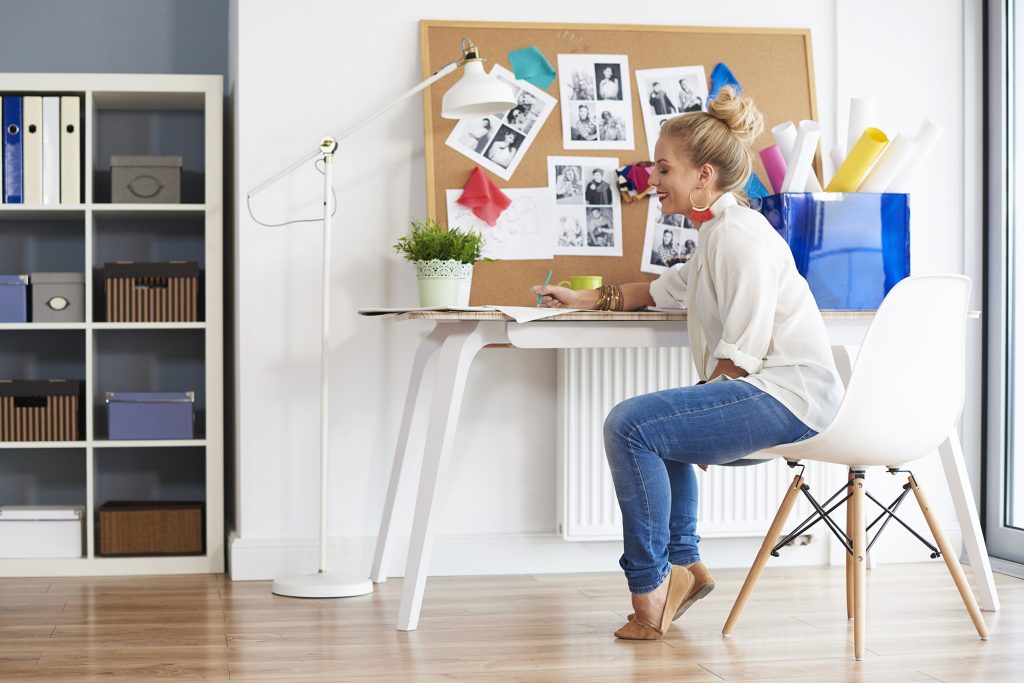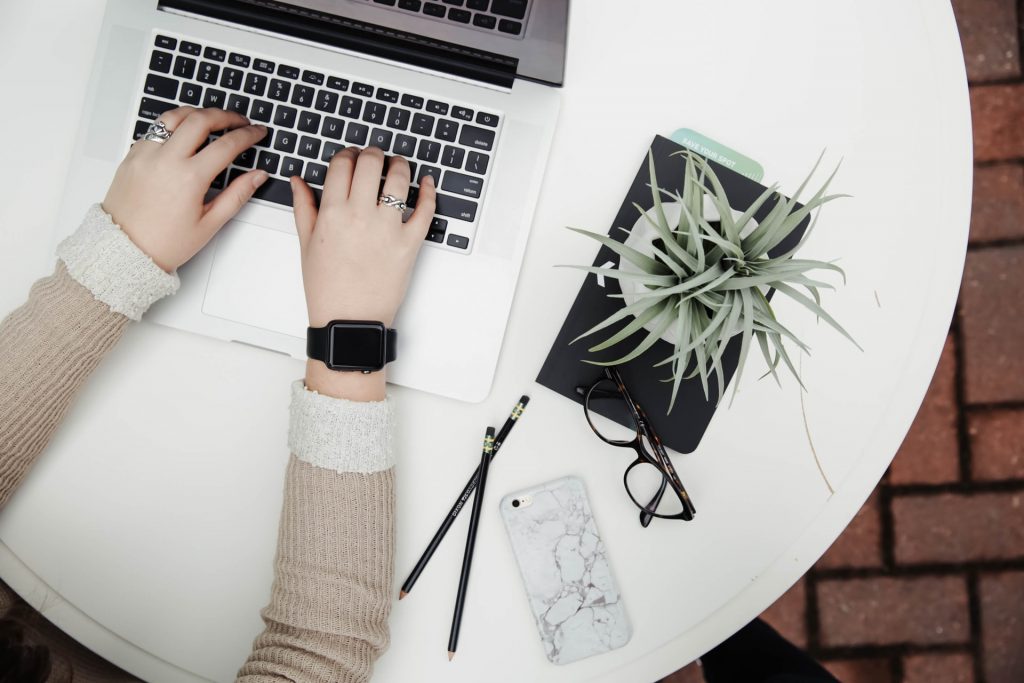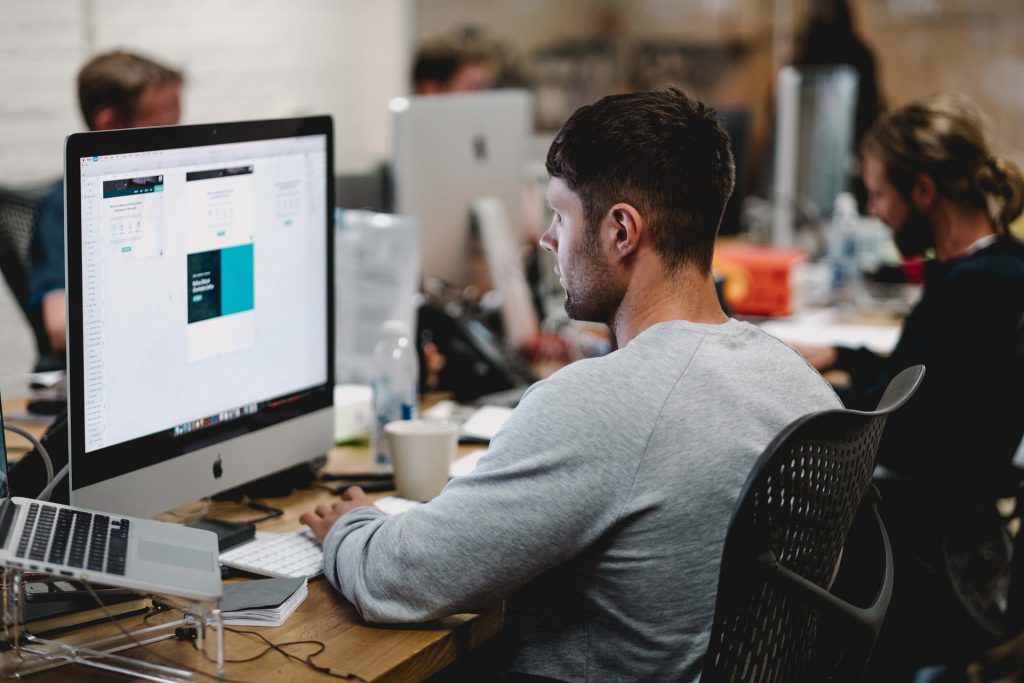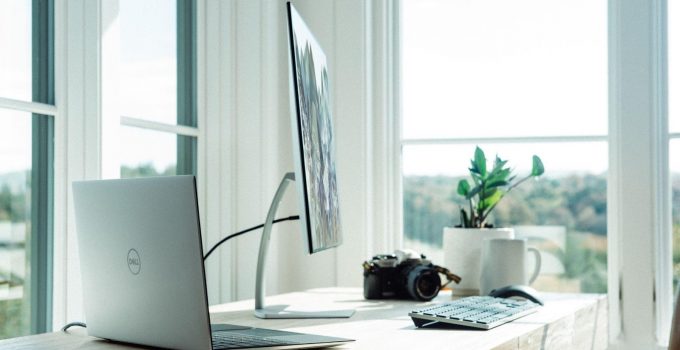The last twelve months have changed a lot for office-based employees. WFH (work from home) used to be a scary concept for a lot of companies, with many blue-chip firms, in particular, hating the idea of not being able to keep tabs on workers in person.
But according to several surveys, WFH is here to stay. Gartner, for instance, predicts 80% of all B2B sales interactions to be digital, with plans to allow employees to work from home at least part of the week, while almost half will drive a permanent WFH culture. According to a PwC survey of almost seven hundred company CEOs, 78% think that remote work is not going away.
This means that your rickety office chair won’t cut the mustard. That table that’s been falling apart for years needs to go. Still working on your kitchen table stooped over on your laptop? It’s time to make some changes. This is how you can create a stylish office that also ticks your functional boxes (note: you can use these tips either for your own home office, but also a small business space!).
Mood/Inspiration Board

Source: lifeandstylemag.com
Find a place on your wall to put up an inspiration or mood board. Put up things that get your creative juices flowing, photos and event flyers that make you smile, and a to-do list that’s ‘in your face’ so you won’t forget the most important things to do that day.
What we really love about adding an inspiration board is that it showcases your creativity and personality. Having ‘style’ isn’t about following a prescribed set of rules, but about letting go of convention and experimenting. When people walk into your office space, that board should let others know that it’s you.
Invest in the Proper Kit

Source: pexels.com
They say a bad workman blames his tools. But we are going to be a little contrarian and say to deliver a job to a good standard, the very minimum you need is the right set of tools:
- Office chair. You’re going to spend about eight hours a day sitting on your chair. Make sure it’s one that gives you proper support, otherwise your back is going to let you know about it.
- Desk. Not too big, not too small, sturdy; make sure it’s the right height for your setup. Consider a hybrid desk, so you can spend some of your days working standing up.
- Laptop. Buying a cheap laptop may seem like a good idea, until you realize it adds several seconds to each and every task. Not to mention the moments you want to throw your computer out the window due to freezes and crashes. Spend a little more and get a laptop that will make your work easier, not harder.
- Printer. Again, an issue of quality here. Cheap printers are usually the most expensive, especially if you print frequently. You see, the less expensive models use a lot of ink and are super inefficient. Inspect the printing ink after just a few days of steady work (more information on inkstation.com.au); We are willing to bet you’re almost down to empty.
Incorporate Green Into Your Space

Source: unsplash.com
Adding a little bit of nature to your office isn’t just ‘nice’ or an aesthetic thing. Science has shown that it can boost productivity, with a study from the Journal of Experimental Psychology suggesting that adding a single plant per square meter can positively affect basic task performance and memory. Further, just having a chance to look at greenery can boost creative flow, important in pretty much any work environment in some way.
Here’s what you can do:
- Natural sounds. Going for nature in the office isn’t just buying a plant. Buying a white noise machine, for example, can also help restore morale and boost productivity. It can mask distracting noises such as constant phone calls and the usual office chatter.
- Let there be light! SAD (or seasonal affective disorder) is a thing, trust me. Light therapy is a way to combat the winter blues by mimicking daylight. It can help keep those energy levels up, as well as helping with mood and happiness.
- Fresh air. Stuffy offices with little to no air will suffer. Just ‘consuming’ air conditioning isn’t good for you either. If you can, open up your windows as much as possible. Studies show they help reduce ‘sick building syndrome’ and the transmission of illness (particularly relevant today!).
- Buy plants. The obvious one, which we’ve saved for last. Buy a few high-quality plants and dot them around the office/desk.
Remove Clutter and Mess

Source: unsplash.com
Clutter isn’t good for the brain. Again, that isn’t just a cheap statement grabbed out of thin air. In 2011, researchers used functional magnetic resonance imaging (as well as additional physiological factors) found that having an uncluttered space at work resulted in improved focus and ability to process information. Further, the study found that those partaking also saw greater productivity.
But it’s not just about what a lack of clutter achieves. Having a messy workspace leads to us feeling anxious, stressed, and can even lead to symptoms of depression. For example, a study from 2009 found that mothers living in a cluttered home environment saw greater levels of the stress hormone cortisol.
The lesson? Keep your space clean. It doesn’t have to be spick and span, just organized and without piles of paper everywhere. Invest in efficient methods of organization, as well as plenty of storage space.
It’s About the Workers, Not the Office
Finally, we’ll end with an expanded version of the advice given earlier: the office is about you, the workers, not the space itself. People often think about doing something that they’re ‘meant’ to do, how an office should be. They think about aesthetics, something Instagram-worthy. Or they want to match what is seen as trendy, cool, part of the start-up look.
But that’s not going to get you what you want, an office that’s not just stylish, but also adds functionality, improves morale, drives up productivity, and boosts overall happiness. Instead, focus on your needs, wants, and go from there.







